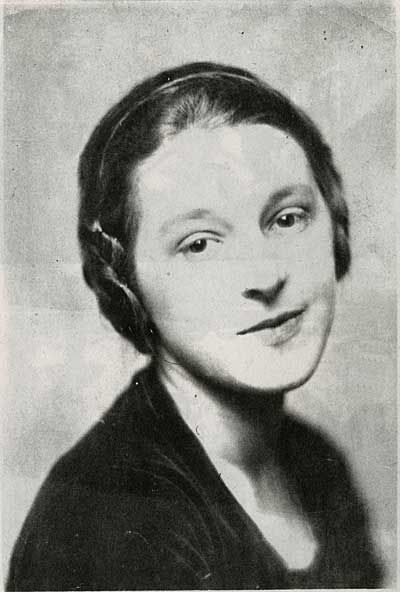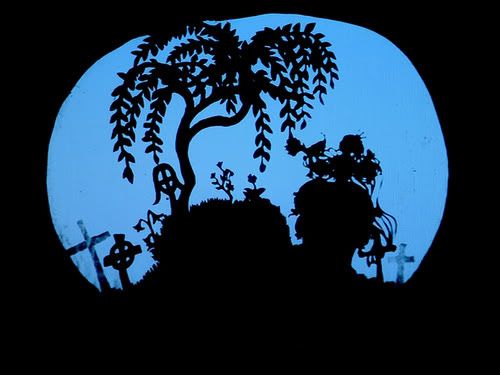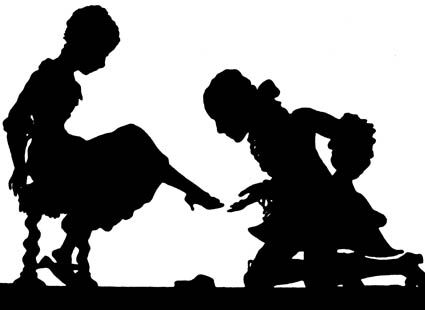 |
| FIG.1: Lotte Reineger |
Lotte Reineger(1899-1981) was a German animator and film director whose work was particularly focusing on the power of silhouette puppets. Born in Berlin, Germany, Reineger showed from a very young age her interest in making her own cut free-handed paper silhouettes, which she used in her own home-made shadow-theatre. No other animator has accomplished to take such a specific animation technique and make it entirely her own.
Highly influenced by the shadow puppets of ancient China and Indonesia Reinger brought this art back to life and transformed it into a landmark of cinema. There is something magical about shadow puppets that makes them so appealing to the viewer. Using mostly fairy tales for her short films Reiniger made her characters in a way that it speared the viewer, particularly the child viewer. Unlike some constructed animals that were use in animation during the same time, which were robotic and uncanny, her cut out silhouettes may not have been three-dimensional-thus close to reality- but were charmingly maintaining the balance between the product of art and life. There was also the ability of distinguishing each figure by their silhouettes which made the characters so unique. Even when using animal characters " the pulky scissors cut lively curves in the black paper, aqnd living beings arise in pleasingly rounded elegant forms. Everything is caricatured, but with so much sensitivity to the real nature of each creature that the accentuation never becomes a distortion." (Arnheim.1997)
 |
| FIG.2: Cinderella |
Taking one of her short films from the very famous fairy tales Cinderella as an example it is obvious how much effort has been put in it. The backgrounds are meticulously cut out showing every detail. The leaves, the grass and vegetation are easily distinguished, while the whole background was adapting to the mood of the story. This scene(FIG.2) for example is a highly ambiguous one with the gravestones from both sides and the flowers beneath the tree. The contrast between these two show Cinderella's past and present situation: she was devastated, being used by her step sisters but then her torn dress transformed into a gorgeous one and got to got to go to the Ball and meet the prince.
Even the silhouettes's facial features and body posture had a lot to tell about the characters' attitude. The villains for example like the evil sisters had the step mother had pointy features and exaggerating body language unlike ciderella and the prince(FIG.3) who were delicate and kind looking. It is obvious how modern animators were influenced by technique in character design like Tim Burton whose characters have distinctive figures with over-stretched limbs and squashed facial features."Animated figures provide archetypal rather than definitive renderings of fairytale characters, and particularly in Reiniger’s monochromatic stories, the images allow space for the viewer’s imagination to fill in the gaps. Her silhouettes make the gestures of the characters and carry out the actions that comprise each tale, but they are a partial conjuration, a world into which we peer rather than disappear. " (North.2009)
 |
| FIG.3 Cinderella |
Bibliography
Arnheim, Rudolph(1997) Essays and Critiscm. London: The University of Wisconsin Press
Dan North (2009) Film Review At: http://drnorth.wordpress.com/2009/10/20/lotte-reinigers-cinderella-1922/ (accessed on 19/3/2011)
List of Illustrations
FIG.1: Lotte Reineger At: http://www.animationarchive.org/labels/cutout.html (accessed on 19/3/2011)
FIG.2: Cinderella At: http://www.flickr.com/photos/danrn/4014594287/ (accessed on 19/3/2011)
FIG.3: Cinderella At : http://mylittlesuedeshoes.blogspot.com/2010/03/sue-blackwell-poesia-de-papel.html (accessed on 19/3/2011)

No comments:
Post a Comment